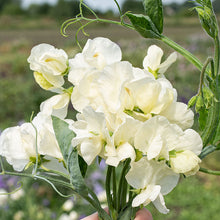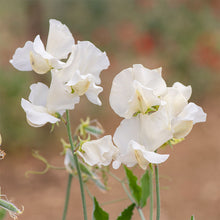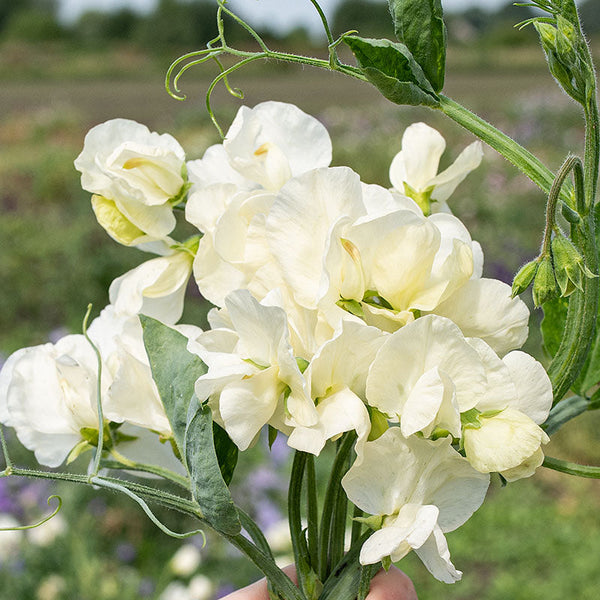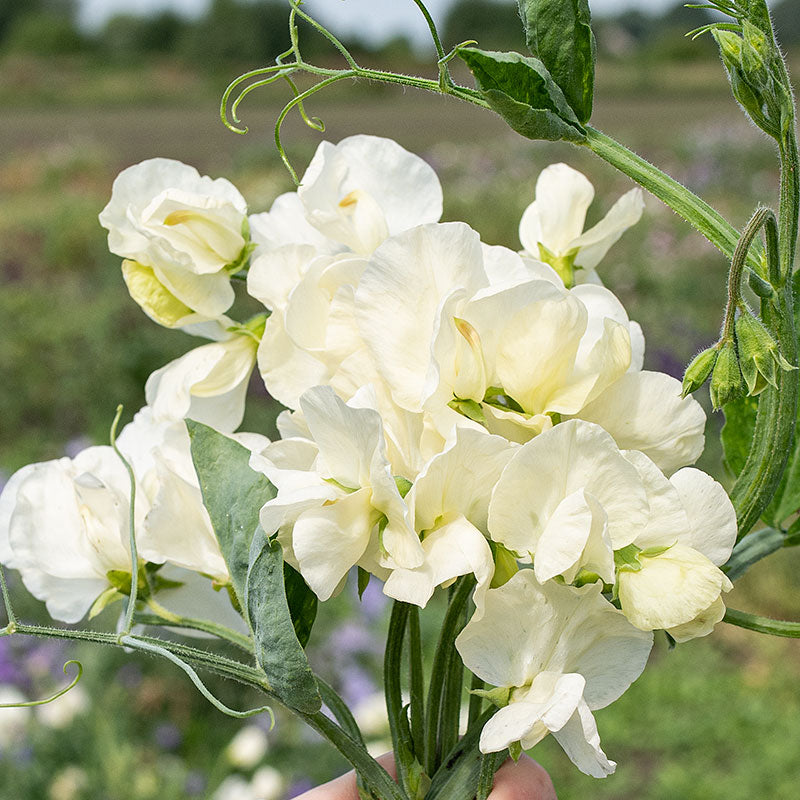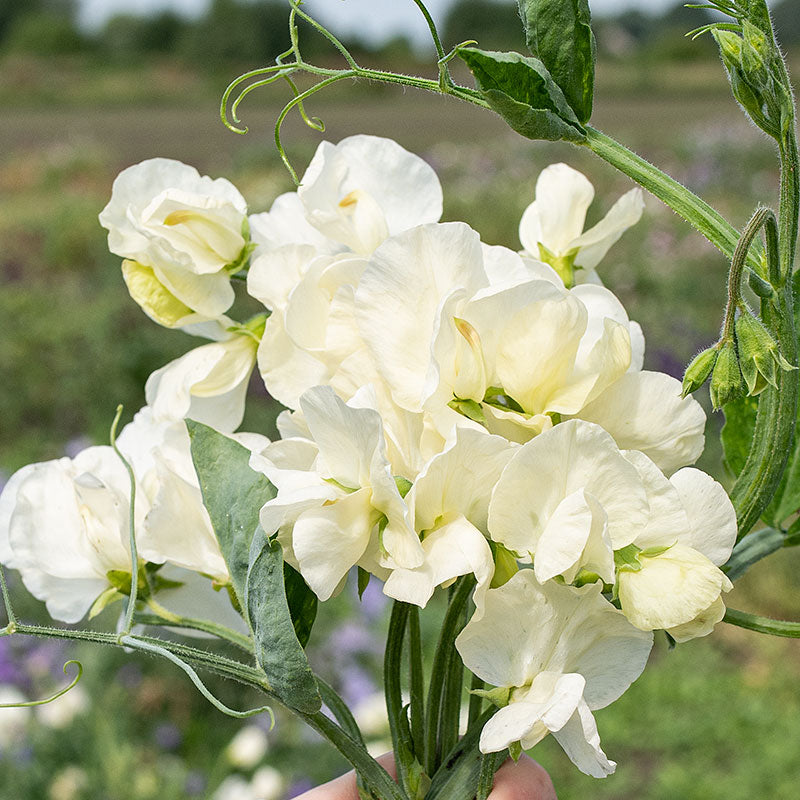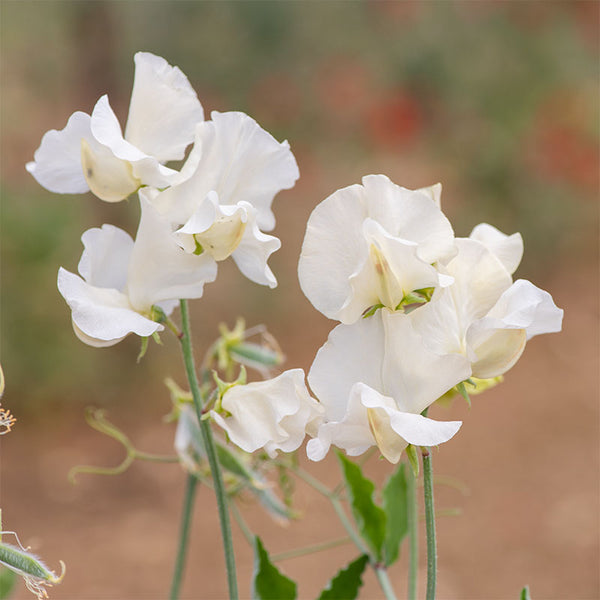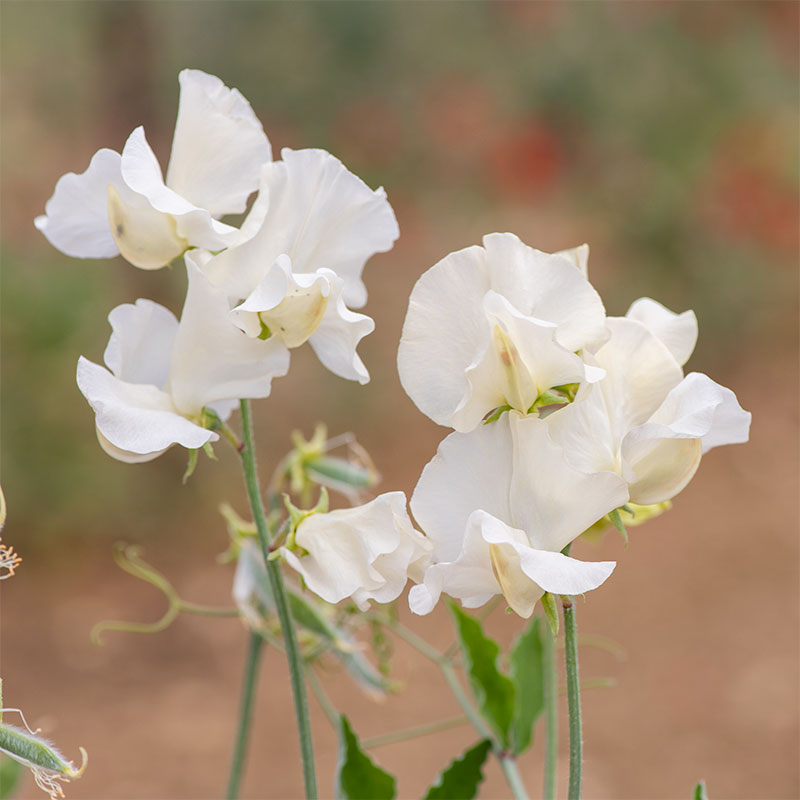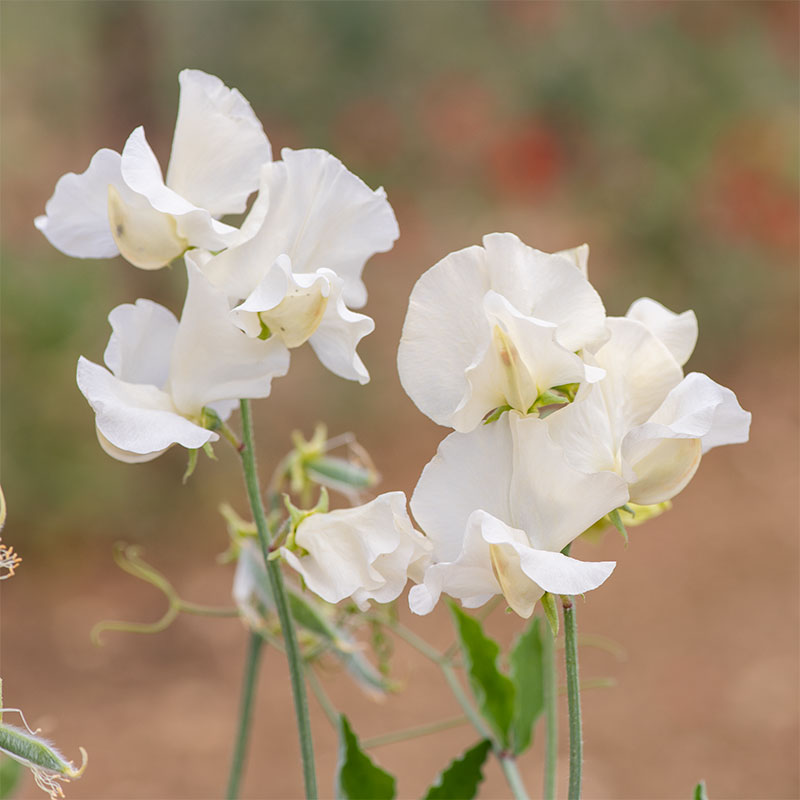SOWING INSTRUCTIONS
Depth:
1/2-1" Tip: Soil inoculant for peas can be utilized but not essential.
Starting Indoors:
Sow in deep pots 4-6 weeks before planting out and keep at 55-65°F. Once up and before leaves unfurl transfer to cold conditions outside in a sunny spot sheltered from cold winds to keep your plants compact and flourishing and able to stand cold snaps. Protect in a coldframe, opening the frame during the day and be sure to keep well watered if weather is still snowy or very cold at night (25-30°F).
Starting Outdoors:
Sow 3-4 weeks before last spring frost. In warmer climates (zone 9) sow in late autumn.
WHEN TO SET OUTSIDE
2 weeks before last spring frost
PLACEMENT & CULTIVATION
Sweet peas revel in moderate summer areas with nights that cool down, blooming all summer long in these areas. However, they can be grown successfully in the border or in cutting gardens in warmer regions, just with a shorter bloom time, as temperatures consistently above 80°F will signal the eventual end of blooming. Transplant while still young–about 2" of growth. Mulch heavily when firmly established to keep the soil cool. Provide humus-rich soils and a trellis upon which tiny tendrils can grab hold. Pinch once when 6" tall to increase branching. Growing for very long stems and extra large flowers requires extra care, selecting only one branch to grow as a single stem, tying onto cane supports as they grow, and removing tendrils to avoid trapping and bending of stems or blooms. For the rest of us, deadhead or cut daily for bouquets, as any seed-setting will signal the plant to cease blooming. Caution: seeds have toxic effects if ingested in significant amounts.
Watering Details:
Keep fairly moist—at least 1" per week, more during particularly dry spells to avoid bud drop.
Fertilizer:
Add about 3-4" or more of compost and aged manure and incorporate it deeply into the soil in the fall before spring planting. Add lime or wood ash if the soil is acidic. Avoid nitrogen rich fertilizers, a high potash kelp based organic fertilizer or rose fertilizer is best.
Diseases & Pests:
Aphids may be an issue—hose down plants with a heavy stream of water regularly until the pest is gone. If slugs or snails appear, treat surrounding soil with pelletized iron phosphate. Protect sowings from mice predation, and small seedlings from damage by birds by covering with row cover until up and growing well. Keep well watered, especially during bud formation to prevent bud drop.
When to Cut for Bouquets:
Harvest when half of the florets are open.






























